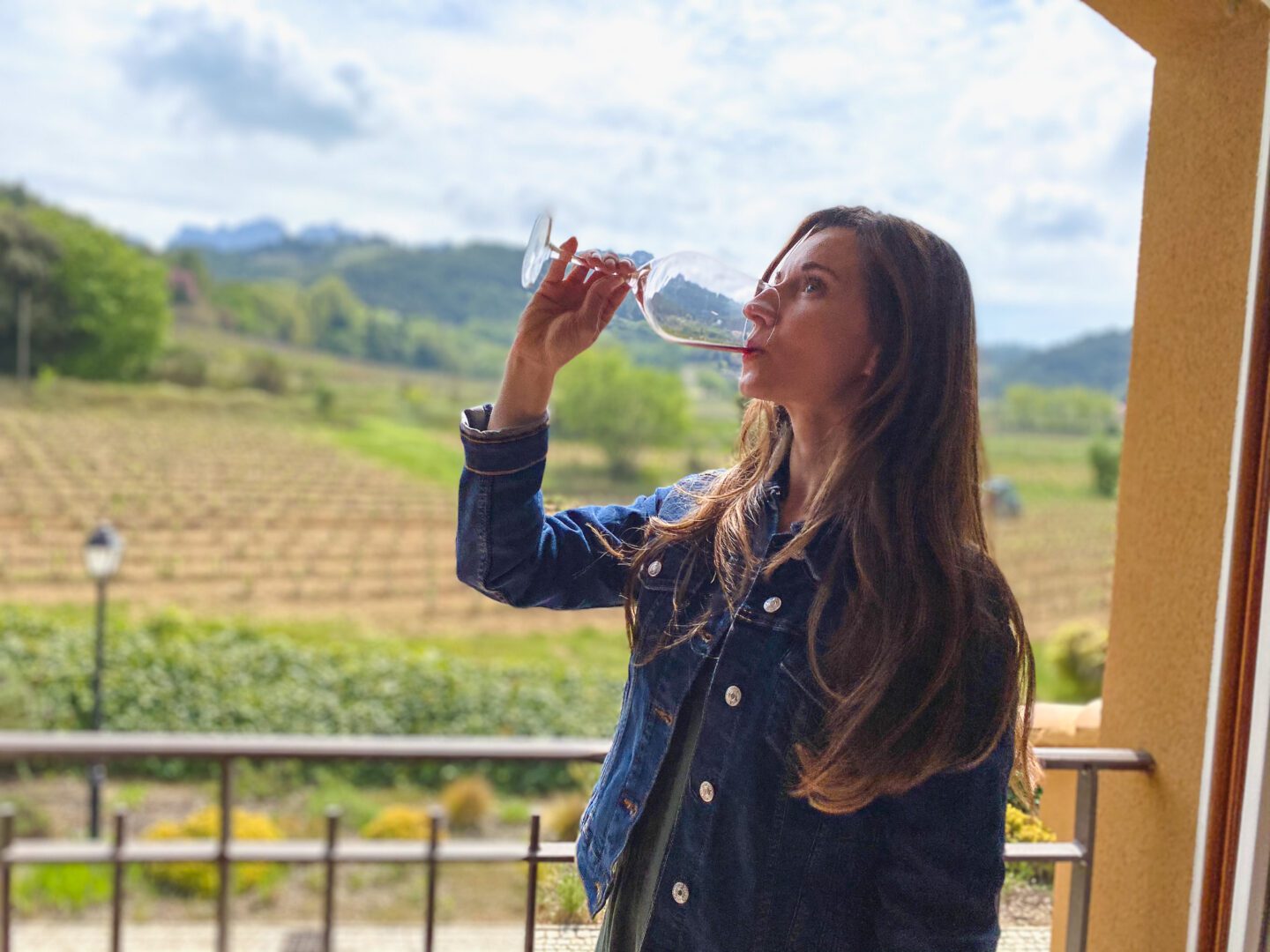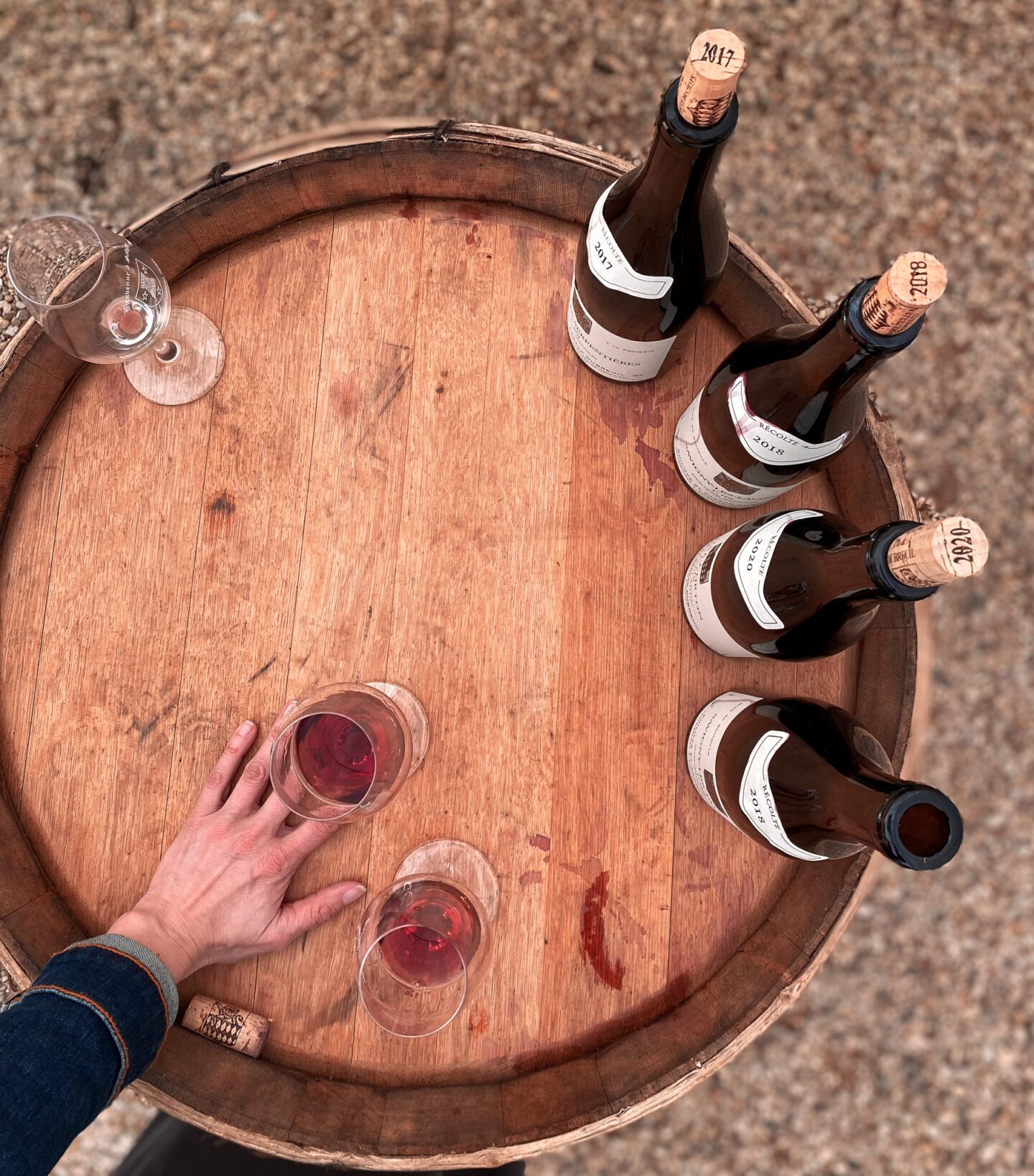
If you’re wondering how to save money on a wine trip to France, you’re not alone. France isn’t cheap — especially when you’re picturing long lunches, vineyard views, and sipping Grand Cru in ancient stone cellars. But with some local insight and the right timing, you can plan a meaningful, delicious wine adventure without draining your savings account.
Here’s how to travel smarter, spend where it matters, and still drink really well.
1. Book Train Tickets Directly Through SNCF
Do not book your train tickets on flashy third-party sites like RailEurope or Omio — they often add extra fees, hide cheaper options, or list outdated timetables.
Instead, head directly to SNCF Connect or download their app. It’s not the prettiest interface, but it’s reliable and gives you access to real-time schedules and discounted fares, especially if you book 2–3 weeks in advance.
See my post “3 Best Ways to Travel from Paris to Burgundy by Train“
2. Avoid Traveling During French School Holidays
French vacation periods are no joke — trains are full, prices spike, and many small wineries close their doors to focus on family or harvest. You’ll pay more, have fewer options, and possibly get stuck somewhere with one open bakery and no taxis.
Best months to visit: March and October.
You’ll beat the crowds, get better deals on trains and lodging, and have more face time with local winemakers who aren’t overwhelmed.
3. Don’t Stay in Paris if Wine Is Your Goal
Paris is magical, yes. But it’s also expensive and not a wine destination. If you’re serious about visiting vineyards and tasting locally, you’re better off staying outside the capital.
Try Lyon instead:
- It’s France’s food capital.
- It’s directly connected to CDG Airport by high-speed train.
- It’s the perfect base to explore Northern Rhône, Beaujolais, and parts of Burgundy.
You’ll eat better, drink better, and spend less on accommodations and transit.
See my post “6 Reasons Why Lyon Needs to Be Your Starting Point to Visit French Wine Regions.”
4. Rent a Car with Getaround (or Skip the Car Entirely)
Need a car? Try Getaround. It’s a peer-to-peer car rental app (think Airbnb for cars), often cheaper than traditional agencies. You can upload your driver’s license, get insurance through the app, and pick up a local vehicle — sometimes contact-free.
💡 But here’s the kicker:
Some regions are doable without a car. If you want to keep it simple (and legal after a few glasses), base yourself in a walkable wine town like:
- Beaune (Burgundy)
- Reims or Épernay (Champagne)
- Amboise (Loire Valley)
- Saint-Émilion (Bordeaux)
You’ll be limited to what’s nearby, but it’s a beautiful way to slow down and connect locally.
See my post “How to Visit Champagne from Paris: 8 helpful tips to getting the most out of your trip“


5. Visit Underrated Wine Regions (Where the Wine Is Cheaper & the Vibes Are Warmer)
If you’re chasing value, avoid the big names like Bordeaux and Côte d’Or. Instead, head to France’s lesser-known but incredibly rich wine areas.
My personal picks:
- Southern Rhône
- Southwest France (Cahors, Gaillac)
- Languedoc
You’ll meet winemakers who are genuinely excited to share their craft. The wines are delicious and underpriced compared to the north, and your euros go further. You’ll need a car in most of these regions, but you can often rent lodging for half the price of more famous areas.
Just a reminder: If you’re doing tastings, buy a bottle or two. Seriously. Don’t be the person who tastes six wines and walks out empty-handed. That’s not cool.
See my posts for an “Inspiring Roadtrip Guide: Languedoc-Roussillon Part I“
6. Learn a Little French (It Makes a Big Difference)
You don’t need to be fluent, but a few key phrases go a long way:
- Bonjour (hello)
- Merci (thank you)
- Est-ce que je peux goûter ? (Can I taste?)
- C’est combien ? (How much is it?)
Even just trying shows respect, and you’ll be amazed how much warmer the welcome gets.
7. Try Pet-Sitting to Cut Accommodation Costs
If you’re open to a slower, more home-based experience, consider TrustedHousesitters. You stay for free in exchange for caring for someone’s pets. I’ve done this in Seattle and London, mostly watching cats — because yes, I’m that kind of person — and it’s a beautiful way to travel with purpose and cuddles.
8. Planning Saves Money — Or Let a Local Help
The more you plan ahead, the more you save — on train fares, lodging, tastings, and experiences. But planning a wine trip to France can get overwhelming fast, especially across regions with different transportation and culture quirks.
If you’d rather skip the stress, you can book a travel consultation or have a custom itinerary built by someone who actually lives here (like me). It’ll cost less than making five wrong turns and showing up at a winery that’s closed for lunch.
FAQ: How to Save Money on a Wine Trip to France
Q: What’s the cheapest time to visit French wine regions?
A: March and October offer better pricing and fewer tourists, while avoiding school holidays and peak harvest closures.
Q: Can I explore wine regions in France without renting a car?
A: Yes! Towns like Beaune, Reims, Amboise, and Saint-Émilion are walkable. Use local taxis or book a guide for day trips.
Q: Where can I find budget-friendly wine experiences?
A: Focus on Southern Rhône, Southwest France, or Languedoc for affordable tastings, lower lodging costs, and more relaxed hospitality.
Q: What’s the best way to save on French trains?
A: Book directly through SNCF Connect at least 2–3 weeks ahead to catch lower fares and avoid third-party fees.
Final Thought
Traveling on a budget doesn’t mean missing out. In France, the best wine experiences often come from the smallest producers, the least touristy towns, and the most spontaneous encounters. Slow down, connect locally, and plan just enough to keep the doors (and bottles) open.
And don’t forget: wine always tastes better when you’ve earned it.
Want help planning your trip?
Book a consultation or check out my custom itineraries for Burgundy, Champagne, Rhône, and more. Plus, I organize private wine experiences in person. Get in touch for more information!